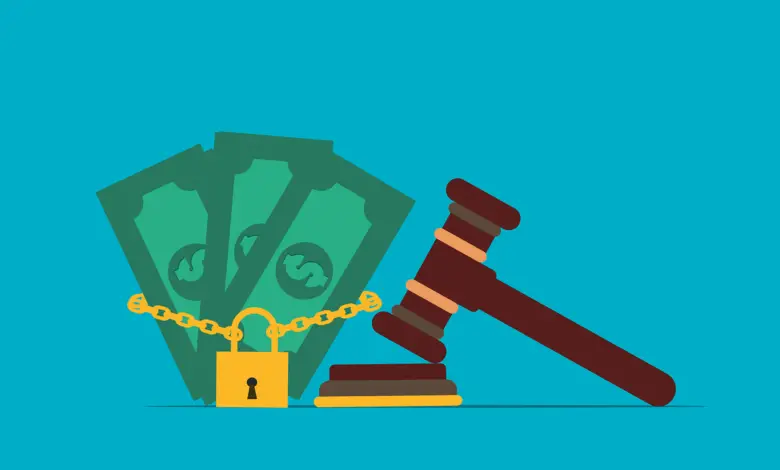How to get Pre-Approved for a Mortgage

How to get pre-approved for a mortgage, The dream of owning a house is a dream for many, yet the process of getting a mortgage can be overwhelming. Being pre-approved for a mortgage is an essential element in this process that provides clarity about the amount of money you can borrow and empowering you to make informed choices. This comprehensive guide explains the intricacies of mortgage pre-approval and provides you with the necessary knowledge and tools needed to start your home ownership journey with confidence.
Understanding Mortgage Pre-Approval:
Pre-approval isn’t the equivalent to pre-qualification. While pre-qualification provides an approximate estimation of your borrowing capabilities using information from your mouth. But pre-approval is the submission of a formal application, credit screening, and verification of your financial records. This will give you a better confirmation of your loan’s eligibility and the potential interest rate.
Advantages of Mortgage Pre-Approval
shows financial strength
Pre-approval letters show your financial capability to prospective sellers, enhancing your offer and making you an appealing buyer.
streamlines the home buying method:
Knowing your budget beforehand allows for better-focused home search and speeds up the closing process when you have found the home of your dreams.
Gives you an edge:
In a competitive market for housing, a pre-approval letter can distinguish you against other potential buyers, and provide you with an advantage in negotiations.
Enhances confidence and calm: Understanding your borrowing capacity and interest rates helps you make informed decisions and lessens financial worries.
Steps to Get Pre-Approved:
- Collect your financial records: This includes your W-2s, tax returns, pay statement, bank statements and even debt statements.
- Find your score on credit: A good credit score (generally at or above 670) is essential to secure favorable loan conditions.
- Calculate your debt-to income ratio (DTI): This ratio is a measure of the amount of your debt each month relative to your monthly gross income. The majority of lenders prefer an DTI less than 43%..
- Search for the best lenders. Find interest rates and fees as well as loan terms with various lenders to get the most competitive rate.
- Send in your application: Provide the required financial documents, and then fill out an application form.
- Conduct a credit screening: The lender will examine your credit history in order to establish your creditworthiness.
- You will receive your pre-approval notice: This letter outlines the loan amount you pre-approved as well as the interest rate and any other conditions.
Extra Factors To Take into Account:
- down payment An increased downpayment can reduce the monthly mortgage payments and reduce the requirement of Private Mortgage Insurance (PMI).
- Type of loan: Explore various loan alternatives like conventional loans FHA loans VA loans and USDA loans to discover the one that is compatible with your financial and personal situation.
- Costs for closing: Be aware of the upfront closing costs that are that are associated with loans including origination charges as well as appraisal costs as well as title insurance.
- Plans for contingencies: Consider potential contingencies like job changes, or unexpected expenses and include them into your financial plan.
Looking for Professional Guidance:
Contact a mortgage lender who is reputable or financial advisor for guidance on the process of pre-approval efficiently and get personalized guidance:
- Evaluation of Eligibility The lenders can assess your creditworthiness, financial condition and the options for down payments to determine if you are eligible to be considered for mortgages of various types.
- Comparison Options They have the benefit of a variety of lenders and can evaluate interest rates, terms and charges from a variety of companies to get the most advantageous choices for your particular situation.
- understanding loan documents: The lender can provide complicated loan documents, making sure you understand all conditions, terms, and obligations prior to signing.
- Negociating Rates The lenders can bargain with the lenders on your behalf in order to get the best rate of interest and mortgage terms.
Additional Tips to Success:
- Begin planning in the early stages: Begin planning for home ownership well in advance to increase the credit rating of your home. Set aside money up for an initial mortgage, and increase your financial security.
- Get knowledgeable about the housing market: Research market trends along with property values and local laws to make informed choices about the purchase of your house.
- Make realistic plans: Be realistic about your budget, and don’t exceed your financial resources.
- Keep your life organized: Maintain accurate records of your financial records and track deadlines throughout the process of pre-approval.
Conclusion Empowered Decision-Making for the Success of Your Home Ownership Journey
Being pre-approved for the mortgage is the initial step in your journey towards homeownership. If you are able to understand the process. Collecting the necessary documents and obtaining professional advice to navigate this step with confidence and ease the way for a smooth and satisfying homeownership. The main ingredient to success lies in an informed decision-making process, meticulous planning and a proactive approach to preparation. By adhering to these principles that you can open the doors to your dream house and begin into a fulfilling chapter in your life.
The Mortgage Maze Other Strategies to Ensure the smooth process of pre-approval
The process of getting pre-approval for your mortgage could be crucial to the process of securing that dream home. But, the process may feel daunting. Beyond the basic steps described earlier, think about these additional methods to increase your odds of a successful and smooth pre-approval process:
1. Fix Credit Score Issues
When your score is below the required threshold Make an effort to improve it prior to applying. Try disputing incorrect data on your credit file, settling any outstanding debts, and implementing prudent credit management.
2. Reduce your debt-to-income ratio
A DTI less than 43% is recommended however, striving for a lower ratio will help your case. And could be eligible for better interest rates. Look into alternatives for debt consolidation, or concentrate on paying off high-interest debts.
3. Increase your Down Payment:
Saving up for an increase in your down payment. Could dramatically improve the terms of your loan as well as monthly payments for mortgages. Explore different strategies for saving and budgeting tools that can increase your down payment.
4. Document additional income sources If you are receiving income from sources that are not related to your main job for example. Rental income or other side business ventures, you must provide proof of these sources. This will boost your borrowing capacity and improve the outcome of your pre-approval.
5. Be transparent and upfront Make sure you provide accurate and up-to-date details to your lender during the process of pre-approval. Transparency builds confidence and ensures that you get your loan quickly and precisely.
How to get pre-approved for a mortgage?
6. Ask questions and seek clarification Do not be afraid to ask questions regarding every aspect of your procedure you think is unclear. Knowing the conditions and terms of your pre-approval letters is vital to make informed decisions.
7. Explore alternative financing options If conventional mortgage options aren’t feasible. Consider alternative financing options such as FHA loan, USDA loans, or VA loans. These may have more flexibility for first-time homebuyers and borrowers with less credit scores.
8. Plan for closing costs Keep in mind that closing expenses are due at the time of closing and you must factor them into your budgeting. Study the typical closing costs in your region and begin saving up in advance to avoid financial stress.
9. Maintain Financial Stability Don’t take on any additional loans or making any major financial decisions during the pre-approval procedure. Financial stability is an indicator of good financial management skills and improves the likelihood of getting the loan you want.
10. Be Proud of Your Achievement: Being pre-approved for a mortgage is an important accomplishment. Be sure to appreciate your accomplishment and celebrate this significant milestone in your journey towards homeownership.
The pre-approval process isn’t just about getting the loan. But also making sure you are prepared when it comes to buying a home. If you follow these other strategies and staying vigilant, you can traverse the complicated process of pre-approval confidence. And be closer to achieving your dream of home ownership.



